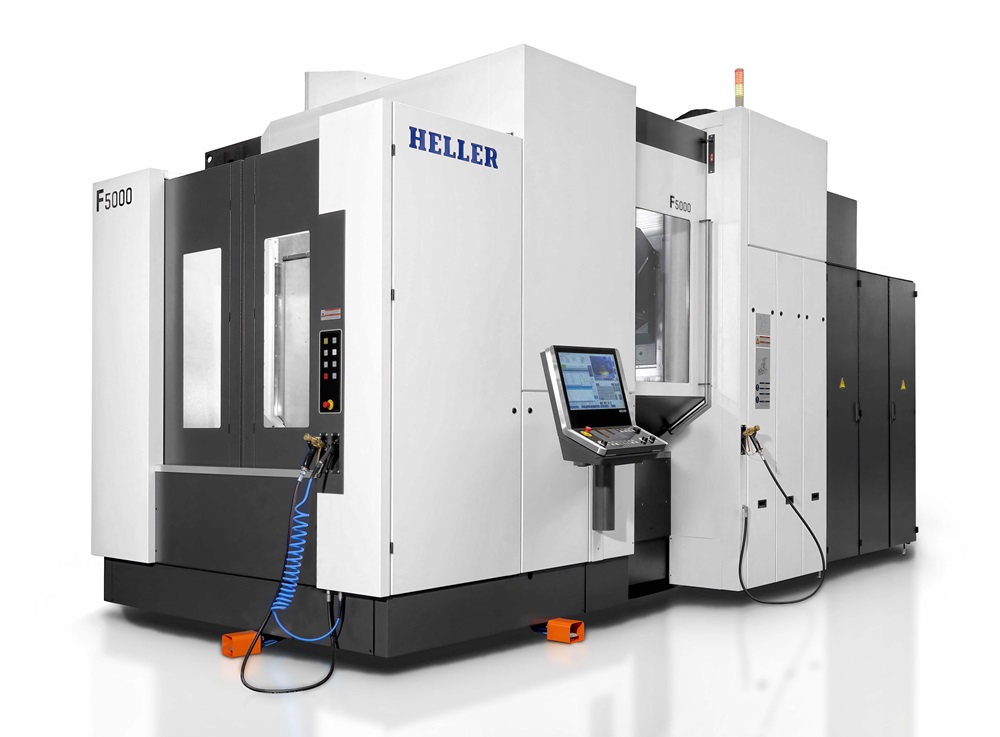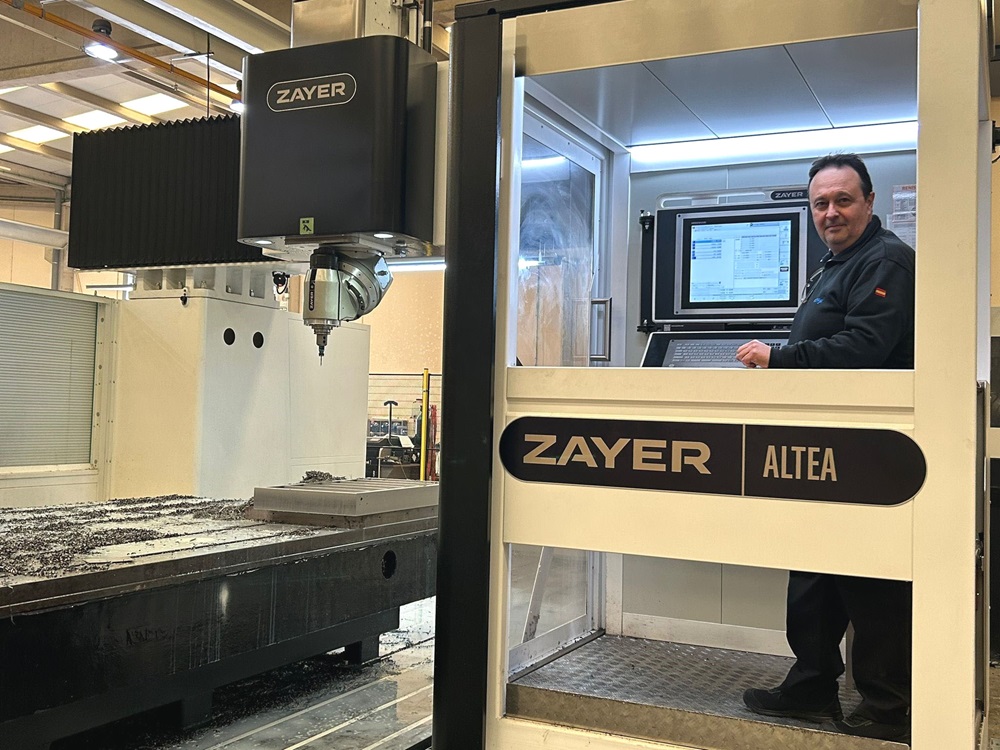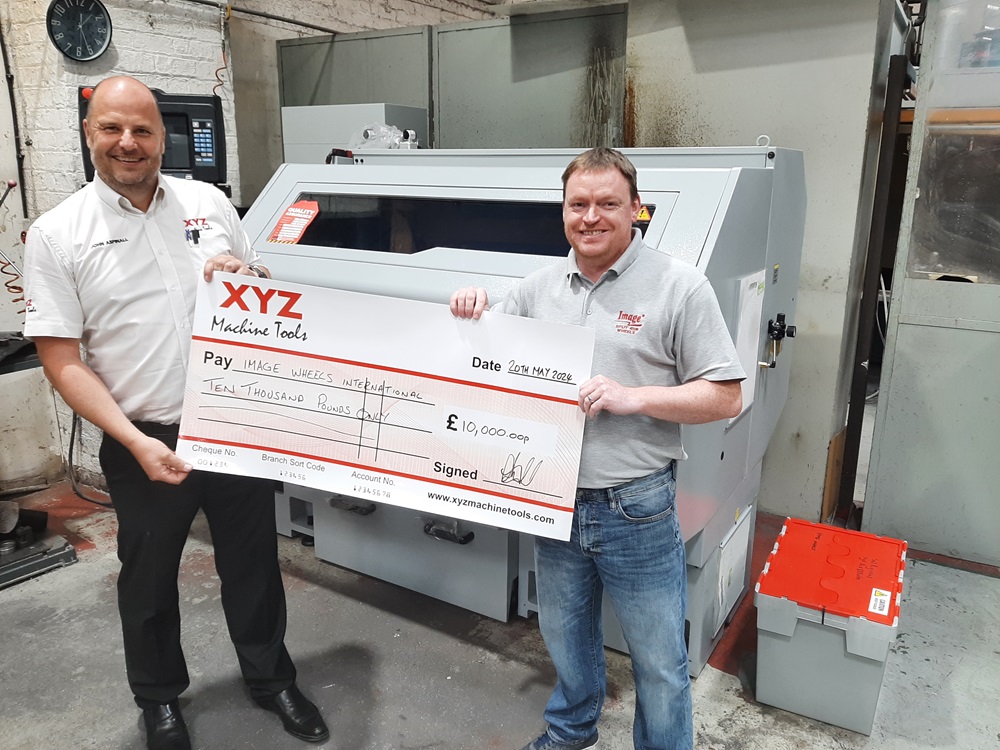Tipton-based Image Wheels has emerged victorious in a prestigious competition hosted by
XYZ Machine Tools at the MACH 2024 exhibition held in Birmingham earlier this year. The
company received a generous £10,000 (plus VAT) discount on the purchase price of any new
CNC machine in the XYZ range. This forward-thinking manufacturing business opted for a
brand new Proturn RLX 555 gap-bed lathe with ProtoTRAK control, aiming to boost capacity
and counteract the current skills shortage.
Founded in 1987, Image Wheels is now a leading UK manufacturer of alloy wheels to
customers worldwide. The family-owned business produces both classic and modern high-
grade alloy wheels to order, supplying over 50 styles in sizes ranging from 10-20” in
diameter, with customisable widths and offsets. Applications include race cars, dragsters,
classic cars, kit cars, trikes and offroad vehicles of diverse types. Keeping pace with the
company’s busy order book requires ongoing investment in the latest manufacturing
technologies. However, there is a notable industry challenge to navigate.
“Finding CNC programmers, setters and operators who can hit the ground running is very
difficult,” reveals Jason Worrall, works director at Image Wheels. “Instead, we’re gradually
upskilling our existing manual machine operators. We can make this task easier by tapping
into the ease-of-use that comes with the ProtoTRAK control.”
Worrall’s visit to MACH 2024 marked his first time at the exhibition, where he visited several
stands to assess potential CNC turning machines.
“I didn’t know about the competition to win a £10,000 discount on any XYZ machine until I
got to their stand,” he says. “I filled out an entry form there and then. XYZ’s area sales
manager John Aspinall, who was familiar to us, phoned me a few days after the show and I
could tell by the excitement in his voice that I had won. It was a great feeling.”
The discount was applied to the popular Proturn RLX 555 gap-bed lathe, chosen for its
sizable turning capacity, impressive versatility and user-friendly ProtoTRAK control. The
machine is already in situ at the company’s Tipton manufacturing facility.
“We only really have one machine for producing large 20” diameter wheels, so with the RLX
555 we’ve effectively doubled our capacity for this type of work,” explains Worrall.
“Although it’s our first XYZ machine, we employed a new operator at the back end of 2023
who has a lot of experience with ProtoTRAK, which means we can get the RLX 555 cutting
metal and earning money straight away. At the same time, we’ll train one of our existing
manual machine operators on the ProtoTRAK. This strategy will help us negate the current
lack of experienced CNC operators.”
Proturn lathes with the RLX 15.6” touchscreen ProtoTRAK control are ideal for one-off and
low-volume production. As the simplest control on the market, machine shops can be
making parts profitably in no time. Even an operator with no previous CNC experience will
be producing complex parts within hours.
The new XYZ Proturn RLX 555 will machine alloy wheels from castings, performing a range of
turning, boring and profiling operations. Image Wheels produces its products from high-
grade cast aluminium, typically in batches of two or four, and sometimes up to 20-off for a
race team. The company, accredited to ISO 9001:2015, has manufactured components for
record-breaking and championship-winning cars all over the world.
Proturn RLX 555 machines offer a swing-over-bed of 560 mm, a spindle bore of 104 mm and
come with a 315 mm three-jaw chuck as standard. Image Wheels opted for the 1 m bed
version, though the Proturn RLX 555 is also available in a 1.75 m model. The machine
supplied to Image Wheels includes numerous advanced options, including the DXF File
Converter.
“Rather than using dimensioned drawings with complex profiles, we can simply output a
DXF file, upload it into the machine, select the contour and away we go,” says Worrall. “It
will accelerate our process and ensure less opportunity for error.”
Quality is paramount at this progressive manufacturing business. Image Wheels
manufactures its products in accordance with British Standards, including BSAU 50 Part 2
Section 5C, BS ISO 4000-2 and BS ISO 16833. The company is a member of the British
Standards Institute, and all wheel designs undergo tests by an independent company using
FEA (finite element analysis).
“Our main differentiator is our products, particularly their quality,” concludes Worrall.
“There are very few alloy wheel manufacturers worldwide who can compete in the same
way. Sure enough, all of us in this industry have business challenges to overcome, with skills
proving one of the most prominent. However, with a bit of fortune that arrived by winning
the XYZ competition at MACH, we’ve found the perfect way forward.”
For further information www.xyzmachinetools.com



















